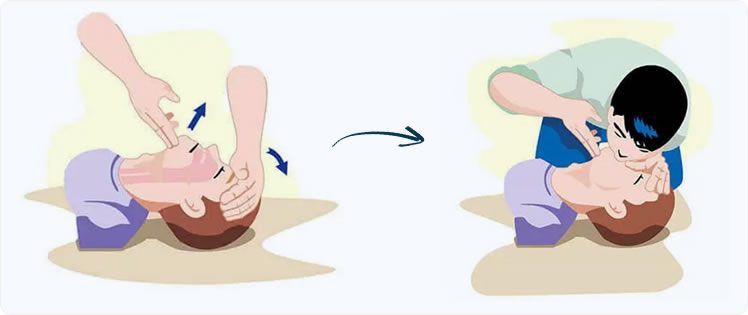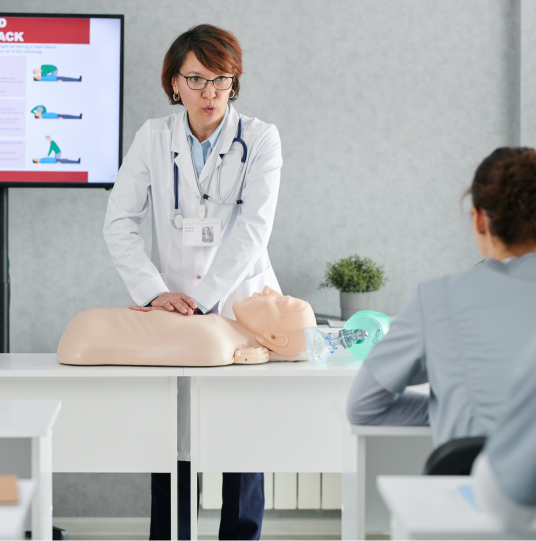Chapter 5: Adult CPR – Airway and Breaths
Once you’ve completed 30 chest compressions, the next step is to open the airway and provide two rescue breaths. If you’re able to give breaths, it can improve the victim’s chances of survival.
- Airway
To give breaths, you must first open the airway and check for any blockages. The most common obstruction is the tongue. If you see a foreign object that can be removed easily, do so. Use the head-tilt, chin-lift technique:
- Tilt the person’s head back and pinch their nose using one hand
- With your other hand, gently lift the chin—this opens the airway

- Breaths
Keep the airway open, pinch the nose, and give 2 rescue breaths, lasting 1 second each. Place your mouth tightly over the victim’s mouth (use a barrier if available), and watch for the chest to rise and fall with each breath. If the breaths don’t go in:
- Resume chest compressions using the 30:2 ratio
- Do not pause compressions for more than 10 seconds
Continue with cycles of 30 compressions and 2 breaths, at a rate of 100 to 120 compressions per minute, until EMS or an Automated External Defibrillator (AED) arrives—or the person begins to breathe on their own.
If the person starts breathing, carefully roll them onto their side in the recovery position. This helps drain fluids from the mouth. While moving the person, be mindful of the neck, head, and back.
Note (2021 Interim Guidance): Due to COVID-19, some responders may be hesitant to give rescue breaths. In such cases, performing hands-only Cardiopulmonary Resuscitation (CPR) is recommended.
This chapter equips you with key rescue breathing techniques as part of your Healthcare Provider CPR/AED and First Aid Combo Course Online.

